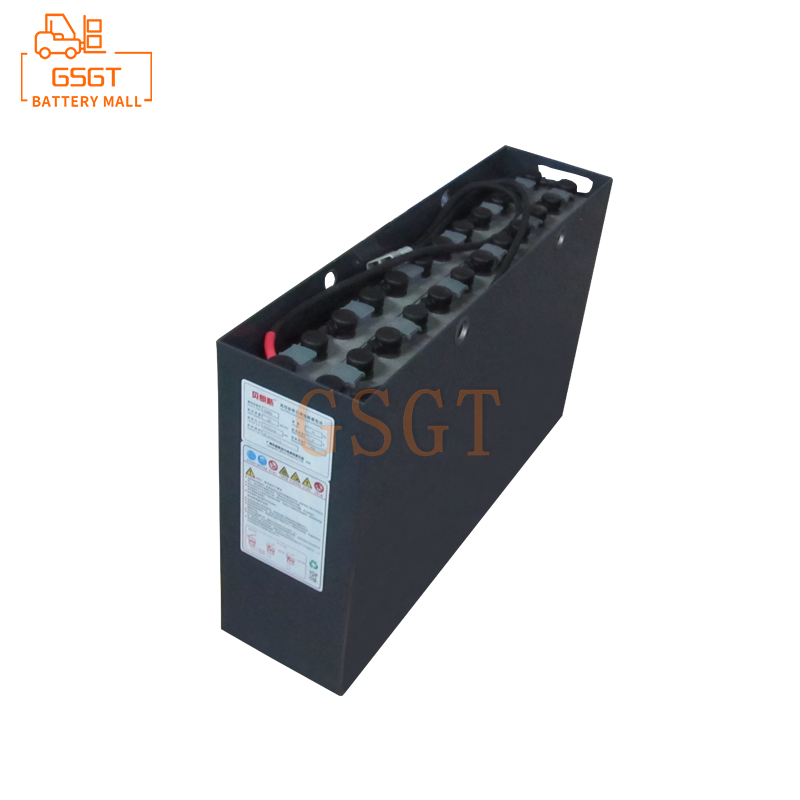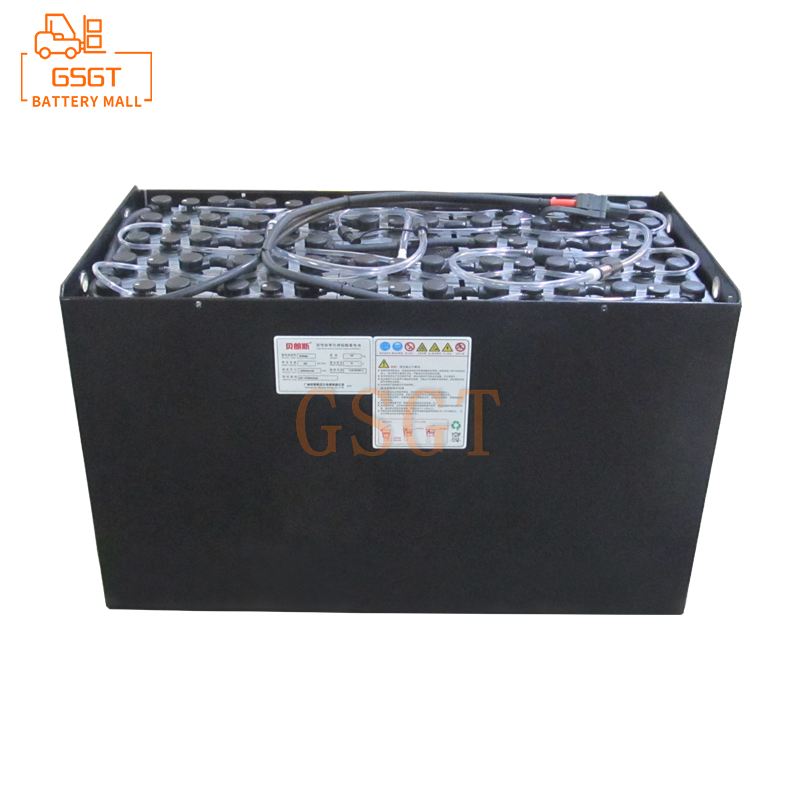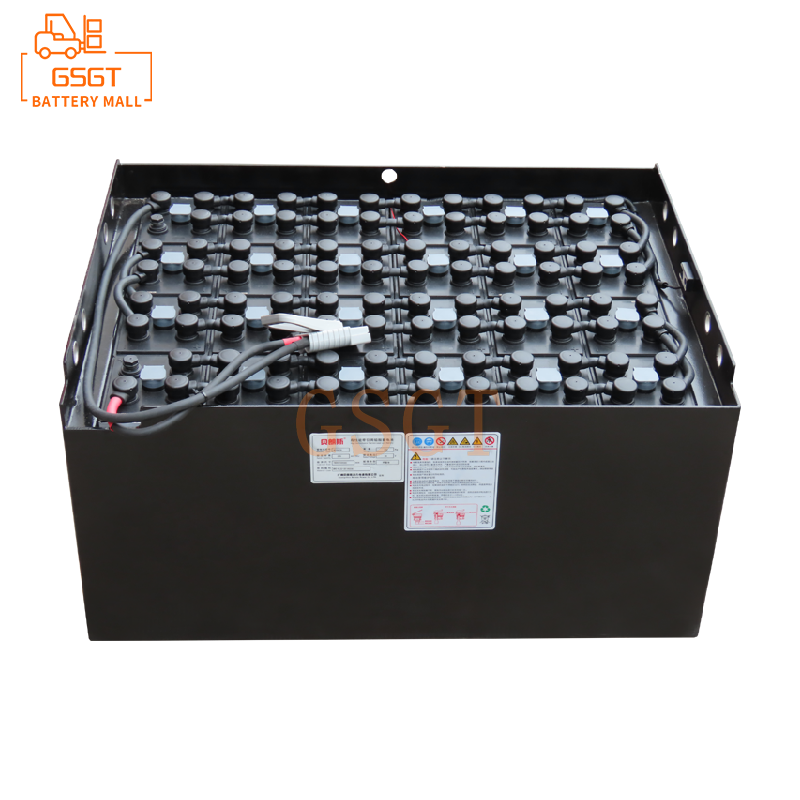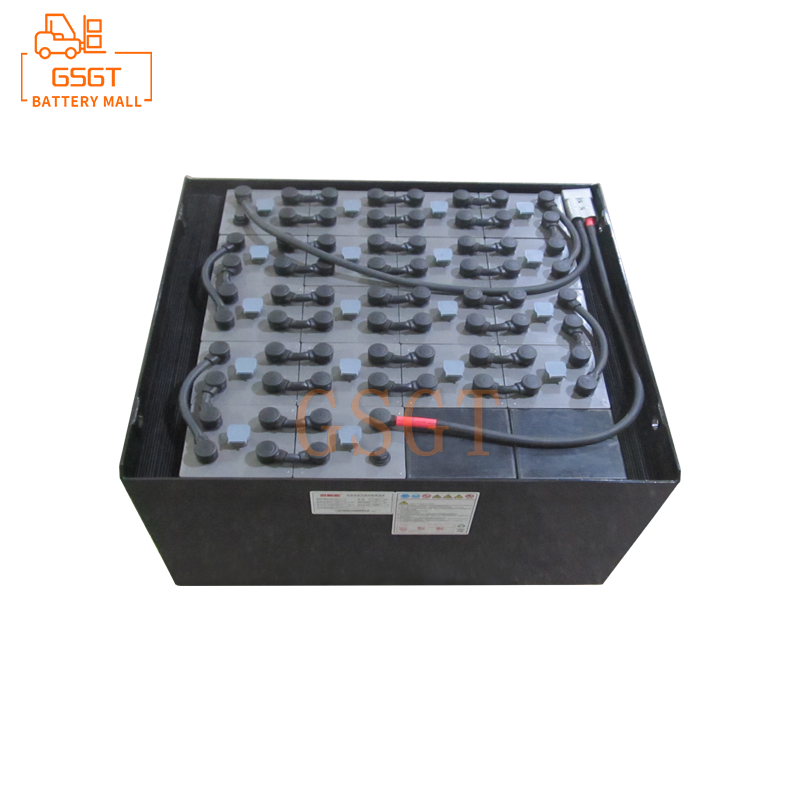Time:2025-06-07 13:07:16
Browse:602
In the modern logistics and warehousing field, forklifts, as indispensable handling equipment, are mostly powered by lead-acid batteries. Lead-acid batteries occupy an important position in the power system of forklifts due to their advantages such as mature technology and relatively low cost. However, the installation process of lead-acid batteries for forklifts is not a simple equipment connection. If the operation is improper, it will not only affect the battery's service life and the forklift's working efficiency, but also may cause safety accidents. Therefore, it is crucial to master all the precautions during the installation process of lead-acid batteries for forklifts.
1. Preparations before Installation
(1) Personnel protection preparations
Lead-acid batteries contain corrosive substances such as sulfuric acid inside and pose a certain risk of electric shock. Therefore, personnel involved in the installation must wear comprehensive protective equipment. Acid and alkali resistant gloves should be worn. Such gloves can effectively resist the corrosion of sulfuric acid and protect the skin on the hands. Wear protective clothing. The material of the protective clothing should have the function of preventing acid and alkali penetration to avoid sulfuric acid splashing onto the body and causing harm. At the same time, safety goggles and masks should also be worn. Safety goggles can prevent sulfuric acid from splashing into the eyes, while masks can prevent the inhalation of harmful gases emitted by the battery during operation, providing all-round protection for the personal safety of the installers.
(2) Preparation of tools and equipment
The installation of lead-acid batteries for forklifts requires a variety of professional tools and equipment. First of all, it is necessary to prepare appropriate lifting equipment, such as battery-powered lifting devices specifically designed for forklifts. This lifting gear must undergo strict quality inspection to ensure that its load-bearing capacity is greater than the weight of lead-acid batteries, and it is equipped with a safe and reliable locking device to prevent the batteries from slipping during the lifting process. Secondly, prepare common tools such as wrenches and screwdrivers for disassembling and installing components like battery connection terminals. The specifications of the tools should match those of the battery terminals to prevent damage to the terminals due to unsuitable tools. In addition, multimeters and other testing equipment should be prepared to test the battery's voltage, resistance and other parameters before and after installation to ensure normal battery performance.
(3) Battery and vehicle inspection
Before installation, a comprehensive inspection of lead-acid batteries should be carried out. Check if there are any damages or cracks in the battery casing. If there are any damages, sulfuric acid may leak, which not only pollutes the environment but also affects the normal use of the battery. Check whether the battery plates are deformed or vulcanized, as these issues can reduce the battery's capacity and performance. Check whether the battery liquid level is within the normal range. If the liquid level is too low, it will affect the chemical reaction of the battery. If it is too high, it may cause sulfuric acid to overflow during the charging process. At the same time, the battery installation area of the forklift should also be inspected to ensure that it is clean, dry, and free of accumulated debris. Check whether the battery installation brackets are firm, and whether there is any deformation or rust, etc., to ensure that the battery can be placed stably after installation.
2. Key Points during the Installation Process
(1) Battery hoisting and positioning
Use hoisting equipment to lift lead-acid batteries smoothly. During the hoisting process, ensure that the batteries remain in a horizontal position to avoid excessive tilting that may cause the electrolyte inside the batteries to shake or even overflow. Slowly place the battery into the battery installation area of the forklift and position it according to the specified position and direction. During the installation process, it is necessary to maintain a sufficient safety distance between the battery and other components of the forklift to prevent the battery from colliding or rubbing against other components during operation, which could damage the battery and forklift components.
(2) Electrical connection
Electrical connection is a key link in the installation of lead-acid batteries for forklifts. First of all, make sure that the positive and negative terminals of the battery are connected correctly. It is strictly forbidden to connect them in reverse. Generally speaking, the positive terminal of a battery is usually marked with a "+" sign and the negative terminal with a "-" sign. You can distinguish them by checking the labels on the battery terminals or using a multimeter. When connecting the battery terminals, use an appropriate wrench to tighten the connecting bolts to ensure a firm connection and prevent poor contact from causing sparks during battery discharge, which could lead to safety accidents. At the same time, insulation treatment should be carried out on the electrical connection parts. Use insulating tape or insulating sleeves to wrap the connection terminals and wires to prevent short circuits caused by poor insulation.
(3) Fixation and Protection
After the battery positioning and electrical connection are completed, the battery needs to be fixed. Use dedicated battery fixing devices, such as bolts, pressure plates, etc., to firmly fix the battery on the installation bracket. During the fixation process, it is necessary to ensure that all fixed points are subjected to uniform force to prevent the battery from shaking during the operation of the forklift. In addition, to prevent the battery from being affected by external factors, a protective cover plate can be covered on the battery surface. The protective cover plate can effectively prevent dust, water and other substances from entering the battery interior, and at the same time, it can also play a buffering role to a certain extent, protecting the battery casing.
3. Inspection and Commissioning after Installation
(1) Appearance and connection inspection
After the installation is completed, a comprehensive visual inspection of the battery should be carried out. Reconfirm that the battery casing is undamaged, the connection terminals are not loose or deformed, and the insulation treatment is good. Check whether the battery fixing device is firm and whether all connecting bolts are tightened to ensure that the battery does not shift or loosen during the operation of the forklift. At the same time, check whether the electrical connection lines between the battery and the forklift are neat and free of entanglement to avoid wear or short circuits caused by messy lines.
(2) Electrical performance testing
The electrical performance of the battery is tested using testing equipment such as multimeters. Measure the voltage of the battery to ensure that its voltage value is within the normal range. Generally speaking, the voltage of a new lead-acid battery after being fully charged should be close to its nominal voltage. Check the resistance of the battery. If the resistance value is too large, it may indicate that there are problems such as poor contact or aging of the plates inside the battery. In addition, a simple charge and discharge test can be conducted on the battery to observe whether its charge and discharge performance is normal, ensuring that the battery can provide stable power for the forklift.
(3) Trial operation and commissioning
After completing the above inspections and tests, conduct a trial run of the forklift. Start the forklift, observe its operating status, check whether the battery can supply power normally and whether the power performance of the forklift is good. Pay attention to listening for any abnormal sounds during the operation of the forklift and check whether all the indicator lights on the dashboard are displayed normally. If any problems are found during the trial operation, such as insufficient power of the forklift or severe battery heating, the operation should be immediately stopped. Further inspection and debugging of the battery installation and electrical system should be carried out until the forklift operates normally.
4. Common Problems and Solutions
(1) The battery is not installed firmly
During the installation process, if the battery fixing device is not tightened properly or installed improperly, it will cause the battery to shake during the operation of the forklift. This will not only affect the service life of the battery, but also may cause safety accidents. The solution is to recheck the battery fixing device, tighten the bolts to the specified torque, and ensure that the battery is firmly fixed. At the same time, regularly inspect and maintain the battery's fixation condition to prevent the fixing bolts from loosening due to long-term vibration.
(2) Poor electrical connection contact
Poor electrical connection contact can cause sparks when the battery discharges, and even prevent normal power supply. The reasons for poor contact may be that the connection terminals are not tightened properly, the surface of the terminals is oxidized or there is dirt, etc. The solution is to disassemble the connecting terminals, and use sandpaper or a dedicated cleaning tool to remove the oxide layer and dirt on the surface of the terminals, ensuring that the terminal surface is clean and smooth. Then reinstall the connection terminals and use an appropriate wrench to tighten the bolts to ensure a tight connection.
(3) Abnormal battery voltage
Abnormal battery voltage after installation may be caused by reasons such as battery quality issues itself, insufficient charging or electrical connection faults. First, check the charging status of the battery to ensure it is fully charged. If the charging is normal but the voltage is still abnormal, use a multimeter to measure the voltage of each cell of the battery to determine whether there is any damage to a single cell of the battery. If the abnormal voltage is caused by an electrical connection fault, each electrical connection line should be inspected one by one to locate and repair the fault point.
The installation of lead-acid batteries for forklifts is a task that requires meticulous operation. From the preparations before installation to the control of key points during the installation process, and then to the inspection and debugging after installation, every link cannot be ignored. Only by strictly following all the precautions and correctly installing lead-acid batteries can the safe and stable operation of forklifts be ensured, the service life of batteries be prolonged, and the efficiency of logistics and warehousing operations be improved. Meanwhile, installers should constantly learn and master relevant knowledge and skills, promptly handle various problems that arise during the installation process, and ensure the reliability of the forklift power system.

$1060

$3260

$5710

$4690

MESSAGE
Professional And Efficient
Security
Affordable Price
Professional Services